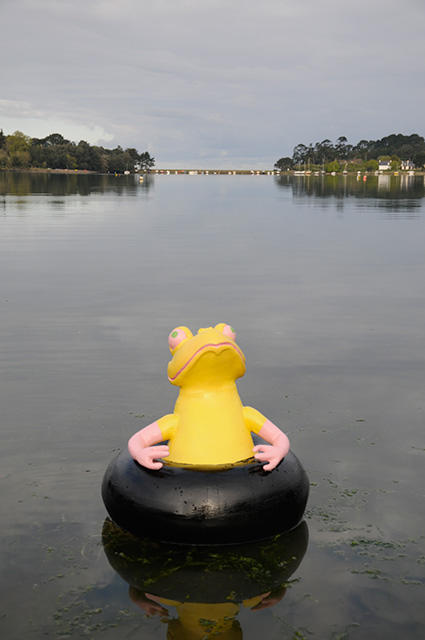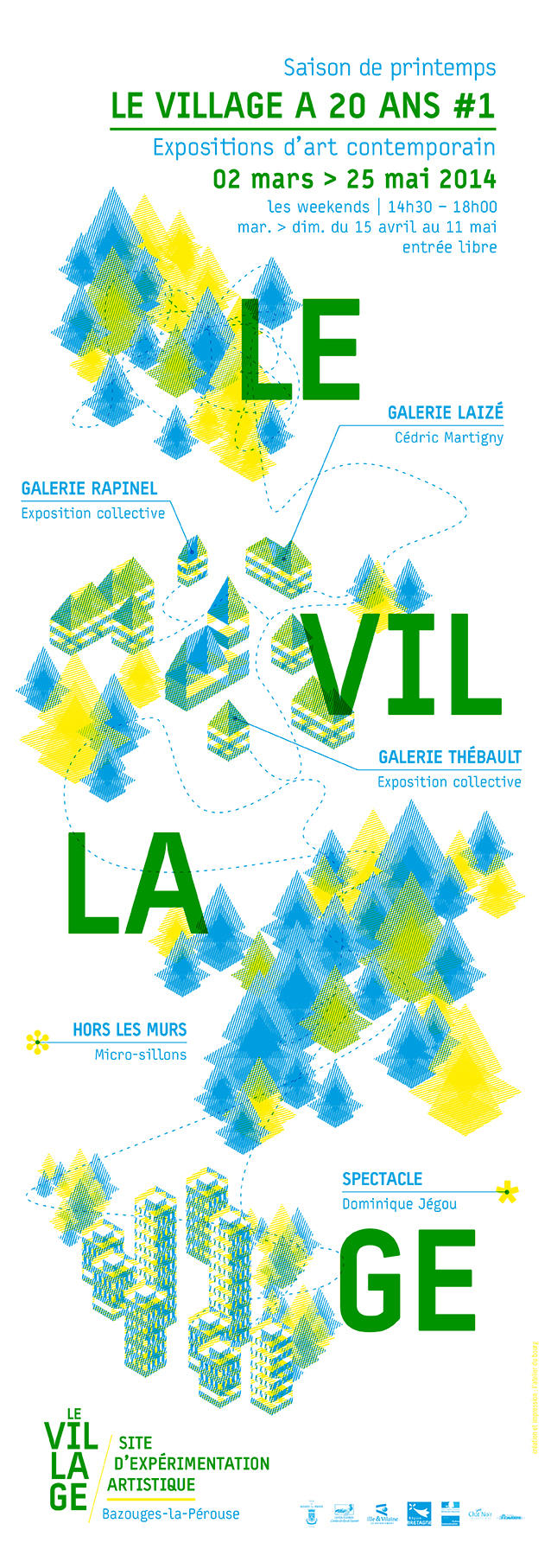Jean-Yves BRELIVET

Grenouille pensant à ses cuisses, 2016
Résine de polyester et fibre de verre
Vit et travaille à Hanvec.
Jean Yves Brélivet, né le 24 juillet 1946 à Brest, donne la parole aux animaux.
C'est au tournant des années 80 que Brélivet s'engage dans l'élaboration d'un univers fabuleux, relevant de la sculpture, où domine la figure animale, à quoi il lui arrive d'associer différents attributs et qu'il intitule Le tango des espèces.
Sur le plan strictement rétinien, il s'agit dans tous les cas d'animaux qu'on croirait emprunter à la Fontaine, dont le souvenir plus que la lecture systématique enchante l'artiste.
L'allure bonhomme de ces figures, le chromatisme joyeux fondé sur de francs contrastes de couleur, la jovialité des postures, la justesse de leurs traits si finement observés, tout cela évoque également l'imagerie des livres d'enfants, la tranquille ménagerie des tendres années, le manège enchanteur autant qu'intrigant. L'étonnante dextérité avec laquelle elles sont réalisées témoigne d'un type de savoir-faire quasi-anachronique et en même temps, cela évoque le mimétisme des personnages des musées de cire. Ces créatures, si vivantes et réalistes en effet, on dirait qu'elles sont le résultat d'une observation si attentive de l'homme que celle-ci débouche sur une représentation plus vraie que nature, l'animal devenant ici la forme aiguë d'une vision au scalpel de l'état des l'humains.
Extrait du texte de Jean-Marc Huitorel, édité pour l'exposition "Baignade interdite », Galerie du TNB, 1998
_____
Jean Yves Brélivet, born on 24 July 1946 in Brest, lets animals speak.
It was in the early 1980s that Brélivet became involved in the making of a fabulous world stemming from sculpture, in which the animal figure was predominant, with which he managed to associate different attributes, and which he titled The Tango of Species. On a strictly retinal level, what was in any event involved was animals which seemed to be borrowed from La Fontaine, the memory of whom delighted the artist more than any systematic reading of him.
The good-natured look of these figures, the merry colours, based on striking colour contrasts, the jovial nature of the postures, and the precision of their features, so finely observed, all that also conjures up the imagery of children’s books. The tranquil menagerie of tender years and the merry-go-round, as enchanting as it is intriguing. The surprising nimbleness with which they are made illustrates an almost anachronistic know-how and, at the same time, it evokes the mimicry of figures in wax museums. These creatures are in fact so alive and realistic that you would think they are the result of an observation of man that is so keen that it ends with a depiction that is more than nature, with the animal here becoming the acute form of a clinical vision of the state of human beings.
Excerpt from the essay by Jean-Marc Huitorel, published for the exhibition Baignade interdite, Galerie du TNB, 1998
Site internet et réseaux sociaux
Documents d'artistes Bretagne - Partenariat Centre national des arts plastiques / Réseau documents d'artistes.



